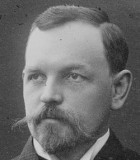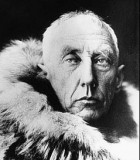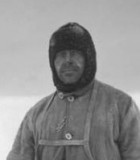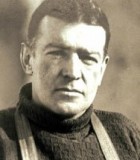ExpeNews Testing Expedition

Otto Nordenskiöld
(December 6, 1869 – June 2, 1928) was a Swedish geologist, geographer, and polar explorer.
Nordenskjöld was born in Hässelby in Småland in eastern Sweden, in a Finland Swedish family that included his maternal uncle Adolf Erik Nordenskiöld (a noted polar explorer) and cousin Gustaf Nordenskiöld. His father and mother were cousins, but his father's family name was "Nordenskjöld", while his mother's family name was spelled "Nordenskiöld".
He studied at Uppsala University, obtaining a doctorate in geology in 1894, and later became a lecturer and then associate professor in the university's geology department.
Otto Nordenskjöld led mineralogical expeditions to Patagonia in the 1890s, and to Alaska and the Klondike area in 1898.

Roald Amundsen
(16 July 1872 – c. 18 June 1928) was a Norwegian explorer of polar regions. He led the first Antarctic expedition to reach the South Pole between 1910 and 1912. He was the first person to reach both the North and South Poles.[1][2] He is also known as the first to traverse the Northwest Passage. He disappeared in June 1928 while taking part in a rescue mission. Amundsen with Douglas Mawson, Robert Falcon Scott, and Ernest Shackleton, was a key expedition leader during the Heroic Age of Antarctic Exploration.

Robert Scott
(6 June 1868 – 29 March 1912) was a Royal Navy officer and explorer who led two expeditions to the Antarctic regions: the Discovery Expedition, 1901–04, and the ill-fated Terra Nova Expedition, 1910–13. During this second venture, Scott led a party of five which reached the South Pole on 17 January 1912, only to find that they had been preceded by Roald Amundsen's Norwegian expedition. On their return journey, Scott and his four comrades all perished from a combination of exhaustion, starvation and extreme cold.

Sir Ernest Shackleton
15 February 1874 – 5 January 1922) was an Anglo-Irish explorer who was one of the principal figures of the period known as the Heroic Age of Antarctic Exploration. His first experience of the polar regions was as third officer on Captain Robert Falcon Scott’s Discovery Expedition, 1901–04, from which he was sent home early on health grounds. Determined to make amends for this perceived personal failure, he returned to Antarctica in 1907 as leader of the Nimrod Expedition. In January 1909 he and three companions made a southern march which established a record Farthest South latitude at 88°23'S, 97 geographical miles (114 statute miles, 190 km) from the South Pole, by far the closest convergence in exploration history up to that time. For this achievement, Shackleton was knighted by King Edward VII on his return home.




















